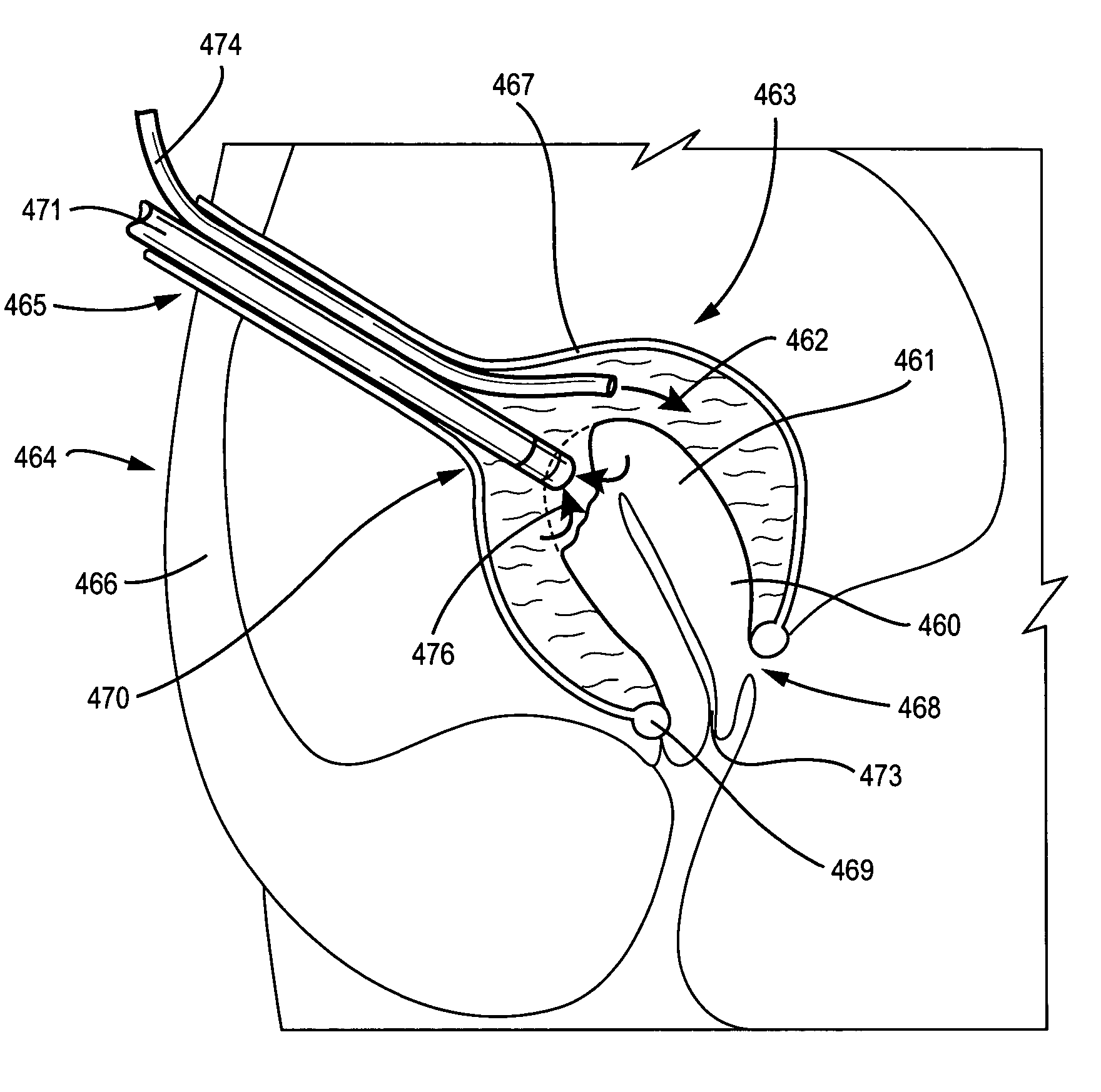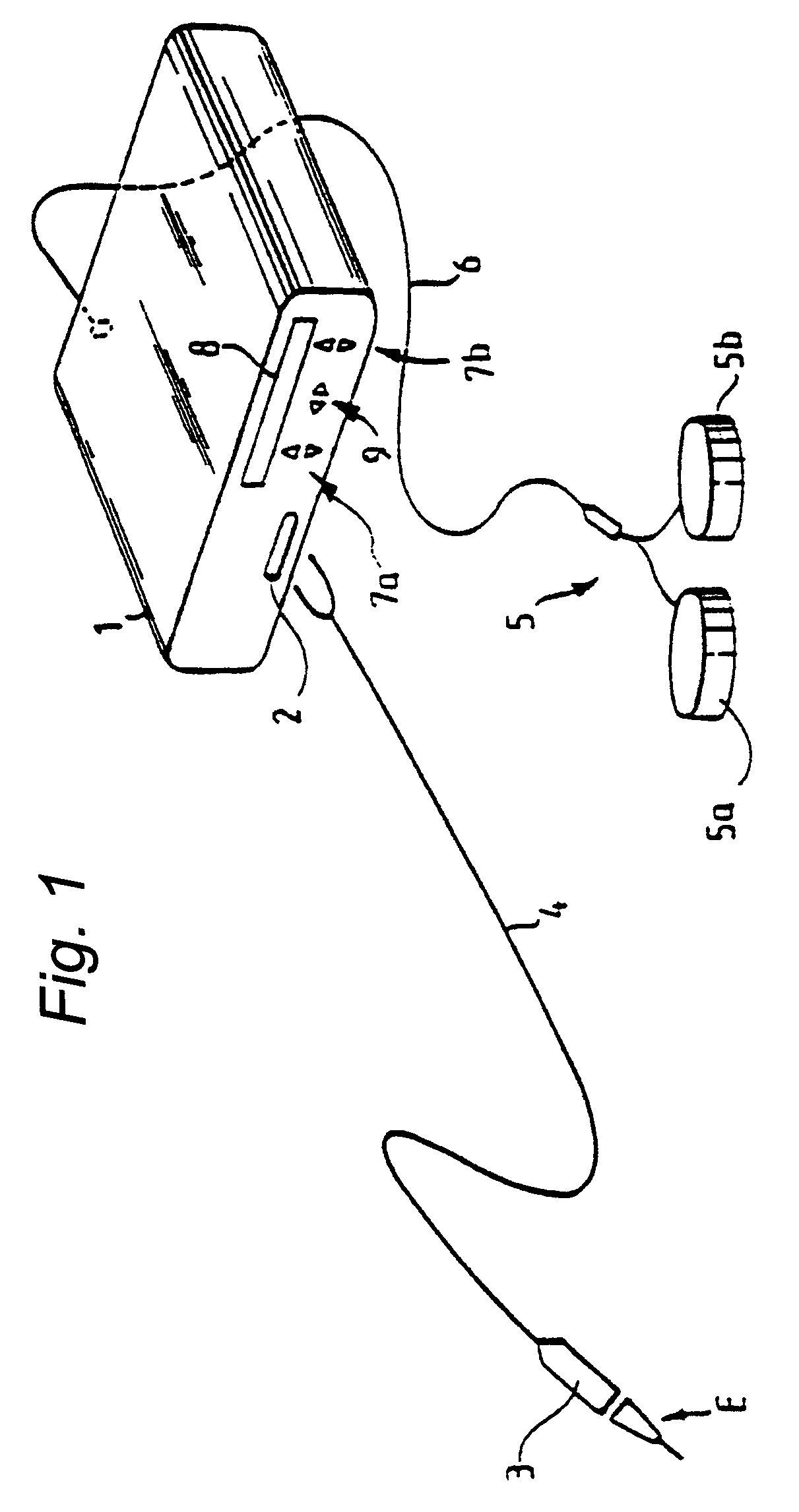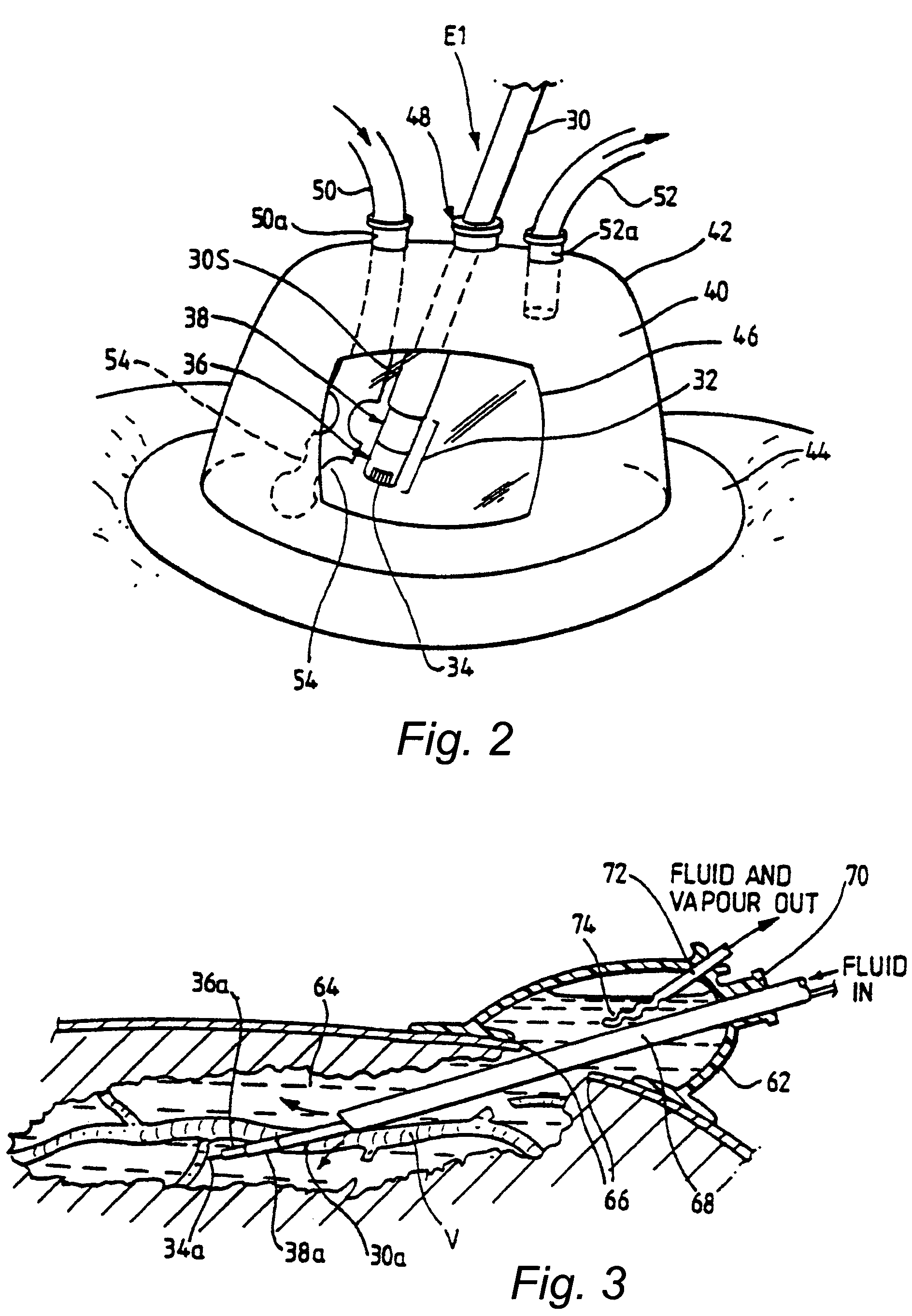Electrosurgical instrument
a surgical instrument and electrosurgical technology, applied in the field of electrosurgical instruments, to achieve the effect of reducing the impedance of electrosurgical output, reducing the formation of char and undesirable thermal damage to tissue margins, and reducing the amount of surgical instruments used
- Summary
- Abstract
- Description
- Claims
- Application Information
AI Technical Summary
Benefits of technology
Problems solved by technology
Method used
Image
Examples
first embodiment
[0098]In a first embodiment, shown in FIG. 2, an electrode unit E1 is detachably fastened to the handpiece 3 (not shown). The electrode unit E1 comprises a shaft 30 which may be a conductive (e.g., metallic) tube covered with an insulating sheath 30S, with an electrode assembly 32 at the distal end of the shaft. At the other end of the shaft 30 (not shown), means are provided for connecting the unit E1 to the handpiece 3 both mechanically and electrically.
[0099]The electrode assembly 32 is bipolar, having an active (tissue treatment electrode) 34 which is axially spaced from a return electrode 38 by means of an insulator 36. The return electrode 38 is constituted by the distal end portion of the tube 30, the portion not being covered by insulating sheet material. In use, the active electrode 32 is positioned in contact with, or in close proximity to, the tissue to be treated. This means that, in normal use when the electrode assembly 32 is immersed in a conductive fluid medium 40, t...
second embodiment
[0104]In a second embodiment, shown in FIG. 3, a fluid enclosure 62 is positioned over a site on the patient's body wherein a space 64 has been surgically created in the tissues through an incision 66. This space 64 may be created using a dissecting instrument under endoscopic visualisation prior to application of the fluid enclosure 62, or may be created under a fluid-filled environment using an electrosurgical instrument or instruments based on the electrode assembly 32, or may be based on a combination of the two. Advantageously, the fluid-filled environment, combined with the generator 1 and instrument system for use with the invention, allows the use of tissue treatment electrodes commonly used for dissection, for example, the hook electrode 34a shown in FIG. 3 or a needle electrode. Such electrodes allow the sealing of larger blood vessels than would normally be treated in this way in a gaseous environment. This is particularly beneficial when sealing, for example a large vein...
PUM
 Login to View More
Login to View More Abstract
Description
Claims
Application Information
 Login to View More
Login to View More - R&D
- Intellectual Property
- Life Sciences
- Materials
- Tech Scout
- Unparalleled Data Quality
- Higher Quality Content
- 60% Fewer Hallucinations
Browse by: Latest US Patents, China's latest patents, Technical Efficacy Thesaurus, Application Domain, Technology Topic, Popular Technical Reports.
© 2025 PatSnap. All rights reserved.Legal|Privacy policy|Modern Slavery Act Transparency Statement|Sitemap|About US| Contact US: help@patsnap.com



